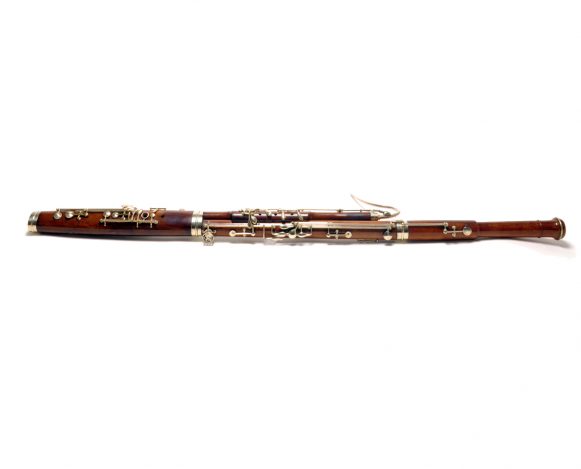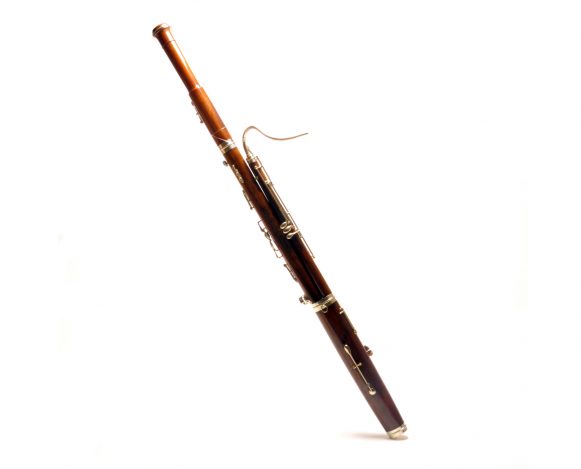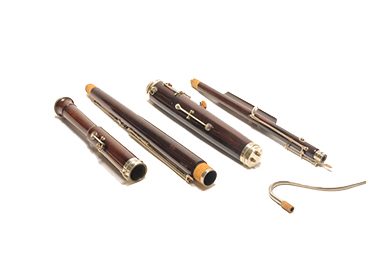





Conic shape instrument made of wood, played with a double reed. The reed fits into a barrel joint, which is an S shaped thin piece of metal. The barrel joint is inserted in the first of four fittings that form the bassoon’s structure. The instrument’s range goes from B Flat3 to E4.
The origin of the bassoon is has not yet been completely clarified, but it is believed that the instrument has appeared from the dulcian, which was a meter high and consisted of two conical wooden tubes, connected on the base. Probably, the dulcian was gradually modified until it giving origin to the present bassoon. Along the years, keys have been added, the distances between the holes and their sizes have been improved, the wood has been altered, the range was increased, the bell and barrel joint were redesigned. The modern bassoon appeared after the modifications done by Carl Almenraeder (1786-1846) between the years of 1817 and 1843. Almenraeder added some keys, adjusted others, displaced and enlarged the holes, everything with the aim of improving the bassoon’s intonation, make the fingering simpler and the sound more uniform. There are two systems of fingering and ways of playing the bassoon: the French style, characterized by Buffet’s instrument, and the German style, characterized by Heckel’s instruments. Because it possesses a more fluent sonority, easier to control, the German style tends to be more utilized then that of the French instruments.
BERKLEY, 2009.
BETHENCOURT; BORDAS; CANO; CARVAJAL; SOUZA; DIAS; LUENGO; PALACIUS; PIQUER, ROCHA, RODRIGUEZ; RUBIALES; RUIZ, 2012.
BRANDÃO, 2013.
Consulting Aloysio Fagerlande (2014)
GROVE MUSIC ONLINE, 2014.
ROLLA, 1974.
SOARES, 1990.
YOUTUBE, 2014.








